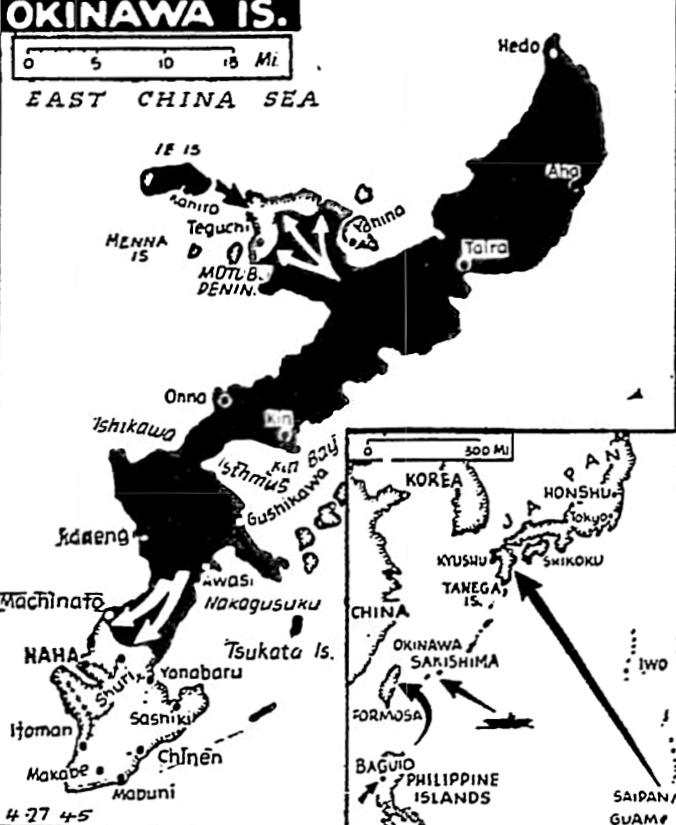Truman believed deciding where to go after Okinawa
Issue apparently is whether to invade Japan first or encircle enemy by drive in China
By Marshal McNeil, Scripps-Howard staff writer
WASHINGTON (SHS) – President Truman, as Commander-in-Chief, may now be in process of deciding what military steps shall be take in the Pacific after Okinawa is ours, some congressmen close to the armed forces believe.
The new President will have an important hand in the strategy decision because it involves not merely military matters in the Pacific but also problems that touch on the home front deeply.
The issue is apparently whether there shall be a headlong assault on the Jap home islands, or an encircling movement aimed at Japan through China.
Invasion of Japan costly
About two weeks ago, these same congressional sources said that our military experts had not then decided upon which way to move after Okinawa is captured.
A frontal assault on the Jap home islands might cost dearly, but it would end the Pacific war more quickly. An encircling movement toward the China coast probably would be less costly but mean a longer war. This was said to be the view of military experts two weeks ago, despite the fact that months ago Fleet Adm. Chester W. Nimitz indicated that the China coast was one of our important goals.
Involves home front
Today, according to the congressional sources, President Truman is probably facing the decision as to which course should be taken. This would involve the question not only of home front production of military goods, but of home front morale in the face of heavy casualties, or less heavy casualties and a prolonged conflict.
In connection with Mr. Truman’s problem, it was the new President himself, who, in his first address to Congress last week, pointed out how important a role President Roosevelt played in our European planning.
Cites commanders
Mr. Truman said:
The grand strategy of a United Nations’ war has been determined – due in no small measure to the vision of our departed Commander-in-Chief. We are now carrying out our part of that strategy under the able direction of Adm. Leahy, Gen. Marshall, Adm. King, Gen. Arnold, Gen. Eisenhower, Adm. Nimitz and Gen. MacArthur… This direction must and will remain unchanged and unhampered.
Some feeling is developing among some of our military experts, these same congressional sources say, that after victory in Europe, Japan may fold up more quickly than has heretofore been expected.
They point out:
When victory day comes in Europe, the whole world will be arrayed against Japan, and this will finally be so impressed upon the Japs that they cannot help but be more ready for unconditional surrender.`
